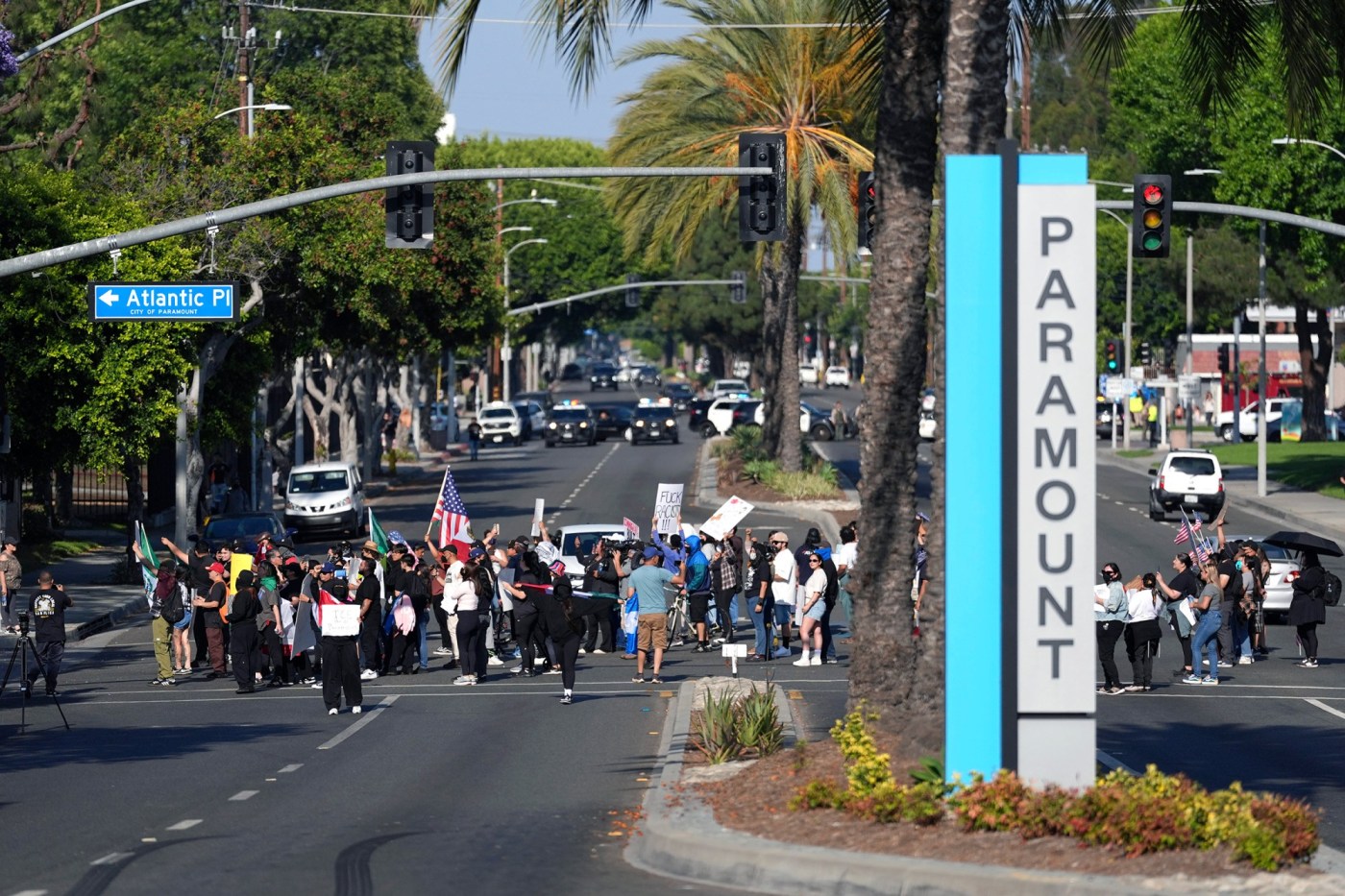
On his Truth Social social media network earlier this week, President Donald Trump claimed that “If we didn’t send out the National Guard — Los Angeles would be burning right now!”
In fact, the scale of the immigration-related protests that started June 6 in Paramount has been relatively small:
Los Angeles County is more than 4,751 square miles, or 3 million acres, in area. (Almost 700 of those square miles are water.)
The city of Los Angeles is about 469 square miles, or 318,912 acres, in area.
The city of Paramount — which is not part of the city of Los Angeles, although it’s within LA County — is less than 5 square miles, or 3,097 acres.
The weekend protests in Paramount took place on about six city blocks, or one-twentieth of a square mile, roughly 30 acres.
RELATED: Here’s how current protests compare with those in the past
If all of Paramount was involved in the protest, that would be 1% of the area of the separate city of Los Angeles and one-tenth of 1% of Los Angeles County.
Related Articles
Gov. Newsom wins legal round over troops, but Trump appeal sends battle to June 17 hearing
‘No Kings’ protests slated for Saturday: What to know about rallies against Trump’s policies
Appeals court temporarily blocks judge’s ruling to return control of National Guard to California
Takedown of Sen. Padilla expected to ratchet up interest in Bay Area ‘No Kings’ protests
Watch: California senator forcefully removed during Homeland Security chief’s news conference
The related protests in downtown Los Angeles have taken place in about a five-block area — about 25 acres or less in a city of more than 300,000 acres.
In contrast, the widespread unrest that followed the 1992 Rodney King verdict took place in about a 40-block area, or about 200 acres. That’s more than eight times the size of the current protests in Los Angeles.
Although the current protests are growing in number and scope, they’re mostly clustered around downtown Los Angeles. They haven’t yet approached what was seen in June 2020, after the murder of Minneapolis resident George Floyd. Then, there were protests across Los Angeles County, including in Altadena, Burbank, Covina, Culver City, Diamond Bar, Downey, downtown Los Angeles, Glendora, Hollywood, La Puente, La Verne, Manhattan Beach, Palos Verdes Estates, Pomona, Redondo Beach, San Dimas, Sierra Madre, Walnut, West Covina, Westwood and elsewhere.
Just as today, the California National Guard was deployed to Los Angeles in 1992. That was at the request of then-Gov. Pete Wilson, though, rather than over the objections of local leaders, as is the case now.
As of Thursday morning, the Los Angeles Police Department had arrested more than 270 people as a result of recent protests, including dozens Wednesday night. About 12,000 people were arrested in connection with the unrest following the Rodney King verdict in 1992.
On Tuesday night, Los Angeles Mayor Karen Bass instituted a curfew aimed at calming tensions in the city. The curfew is specifically for downtown Los Angeles. According to Bass, it covers an area of less than one square mile or about 640 acres. That’s one-fifth of 1% of the total city of Los Angeles. In contrast, Tom Bradley, Los Angeles’ mayor in 1992, instituted a city-wide curfew that lasted six days.